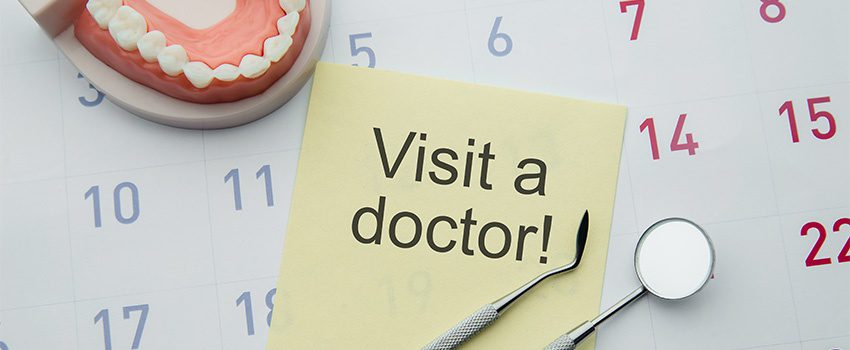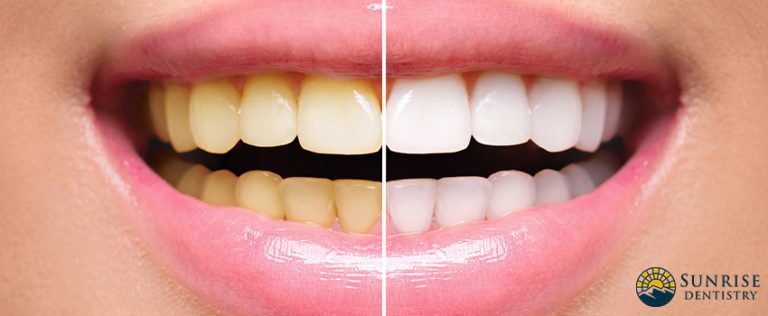Most of us regularly make a dentist appointment to have our teeth cleaned and checked, as it is recommended that we do this once every six months. Once a year, the exam should include a set of bitewing x-rays, which help to identify decay between the teeth. Patients who are under treatment for gum issues, such as gingivitis and periodontal disease, are advised to have cleanings more often, usually three to four times a year. Here is what to expect when you come to our office for the first time.
On your first dental visit to Dr. Strietzel’s, you will first be screened for Covid-19 risk, and your temperature will be taken, which is routine for all patients. If you downloaded and filled out the new patient forms from our website in advance, you are all set to go to the chair when a staff member comes to seat you. Your first dental visit should be a comprehensive exam with bitewing and panoramic x-rays.
X-rays
First, the dental assistant will take x-rays. If you think you might have current x-rays with your previous dentist, we will ask you to contact them to send the x-rays to us. We do try to avoid taking unnecessary x-rays, so as not to incur unnecessary expense or exposure. The x-rays are a very important diagnostic tool for Dr. Strietzel.
Bitewing x-rays help Dr. Strietzel to identify issues that can’t be seen during a regular oral exam. These x-rays also help Dr. Strietzel find symptoms of clenching and grinding, such as widened periodontal ligaments or angled bone loss. They help us see treatments that your teeth have already had and show us the presence of decay, fractures, and infection.
The Panoramic x-ray is a radiograph that goes around the head. It gives us a whole picture of the jawline, and even some of the sinuses. This exam is done especially for identifying wisdom teeth positioning, cysts, tumors, and cancer. Panoramic x-rays are also useful in determining any degree of horizontal bone loss that may be present.
Patient Photos
After the x-rays are completed, the dental assistant will use a special camera and mirrors to take photos of the teeth. This is a very helpful tool for patients, as when the photos are processed, the back teeth in all four quadrants are identified with their tooth numbers, so patients can see exactly what teeth Dr. Strietzel is referring to, especially when discussing a treatment plan. Usually the images are organized on one page and printed out to give to a patient. While the dental assistant is taking the photos, Dr. Strietzel will evaluate all the x-rays to go over with you during the comprehensive exam.
Sleep Wellness Screening
Your dental check up will also include sleep wellness screening. During this evaluation, your tongue and tonsils are examined to determine risk for sleep disorders. The assistant measures your neck size and asks about your sleep. Then Dr. Strietzel will determine by the visual evidence and the other indicators if you should be screened further for sleep-related issues.
The Comprehensive Exam
Part of Dr. Strietzel’s comprehensive dental check up for first time patients are nutrition and general health practices:
Dr. Strietzel does a very detailed comprehensive exam. With our office being a holistic dental office, Dr. Strietzel includes nutrition guidelines in his exams and addresses whole body health to help you make wise choices. He will go over your medical history and risk factors for medications or conditions that could cause problems with your teeth and/or gums. This is also when he will review the x-ray findings with you.
Clinical Tooth Evaluation
The next thing is the clinical tooth examination. Using a tool called an explorer, Dr. Strietzel probes the surfaces of the teeth looking for evidence of decay, which is felt when the explorer indicates a “softness” or “stickiness” on a tooth. He will also look for mobility in the teeth, which is when the teeth move when probed. A common reason for adult teeth to wiggle is gum disease. The gums pull away from the teeth, making them less secure in the mouth.
During a dental check up, Dr. Strietzel will also look for teeth with exposed roots and crowns that do not have a tight fit to the gum line, allowing an open margin to show up between the crown and the tooth. Crowns with open margins are an invitation for bacteria to get underneath the crown and create decay. This is likely to advance more quickly, since brushing under a crown is impossible. It is also hardest to detect because the crown may hide indications of decay, especially on the x-rays.
During the clinical tooth evaluation Dr. Strietzel will also check the bite, looking to see if any teeth are hitting too hard, have shifted, or are biting together in a way that could create problems down the line. He will also check for excessive wear on the teeth, which could indicate clenching and grinding or a sleep disorder such as sleep apnea. Missing teeth will be noted on your chart as well.
Oral Cancer Screening
An oral cancer screening is performed. During this portion of the appointment, examines all areas of the mouth. Dr. Strietzel will be looking for discolorations or patches of color, and using gloved hands, he will gently feel the tissue in the mouth to identify any suspicious lumps or bumps. He will also examine the neck, looking for any growths or abnormalities in the salivary glands or the lymph nodes. Keep in mind for return visits that each time a regular dental check up is done with teeth cleaning, Dr. Strietzel and the hygienist also look for visual signs of cancer. It is recommended that patients who smoke, chew tobacco, or drink alcohol should have this exam every six months. If something suspicious is found, Dr. Strietzel may refer a patient for further tests.
Soft tissue Evaluation
Soft tissues and the gums are evaluated during your first dental visit. Dr. Strietzel will measure the pockets around each tooth and any recession will be charted. Measuring the perio pockets is an excellent tool for identifying gums that are separating from teeth. The more the gums separate from a tooth, the deeper the pockets and the more at risk the patient is of the perils of gum disease. This evaluation also helps to determine the type of dental cleaning a patient may need. If there is significant issue with gum health, a patient may need a deeper cleaning, which involves significant scaling under the gum line, such as with a debridement or scale and root planning.
Formulating a Treatment Plan
Next, Dr. Strietzel will talk with you about a treatment plan based on his findings during the clinical and soft tissue exams and x-rays. If there are multiple options for any recommended treatment, he will review each of them to help you make informed decisions about your dental care. The treatment plan is formulated based on what should take priority, such as cavities that need to be filled before they cause issues that are more expensive to fix. It is always advisable not to let cavities go too long without being addressed. Waiting could result in the cavity reaching the nerve and causing significant pain, the expense of a root canal, or an extraction, especially if the tooth abscesses.
At the end of your first dental visit, the assistant will provide you with a patient folder which can be very helpful to you in planning your appointments. It will have the photos that were taken at the beginning of the appointment, which you can cross-reference with the treatment plan, so you know what teeth are going to be treated. The assistant may also book your next appointment for you.
For married adults, it can be helpful for your spouse to be there for the appointment, so you can both be present for the discussion about treatment, especially if this is your first dental visit and you have several dental problems or multiple treatment options. An even better option is for both of you to have a comprehensive exam at the same time, and then share in the presentation and discussion. That will help you both to have any questions or concerns answered.
Make an appointment with Dr. Strietzel’s, a holistic dentist in Durango, CO now!





